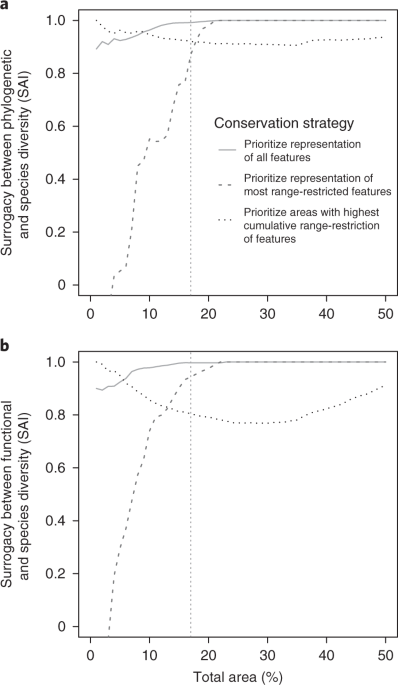
Abstract: "Preserving the evolutionary history and ecological functions that different species embody, in addition to species themselves, is a growing concern for conservation. Recent studies warn that conservation priority regions identified using species diversity differ from those based on phylogenetic or functional diversity. However, spatial mismatches in conservation priority regions need not indicate low surrogacy among these dimensions in conservation planning. Here, we use data for 10,213 terrestrial vertebrate species across the Americas to evaluate surrogacy; that is, the proportion of phylogenetic or functional diversity represented in conservation plans targeting species. We find that most conservation plans targeting species diversity also represent phylogenetic and functional diversity well, despite spatial mismatches in the priority regions identified by each plan. However, not all phylogenetic and functional diversity is represented within species-based plans, with the highest-surrogacy conservation strategy depending on the proportion of land area included in plans. Our results indicate that targeting species diversity could be sufficient to preserve much of the phylogenetic and functional dimensions of biodiversity in terrestrial vertebrates of the Americas. Incorporating phylogenetic and functional data in broad-scale conservation planning may not always be necessary, especially when the cost of doing so is high."
Read More: https://www.nature.com/articles/s41559-018-0744-7
No comments:
Post a Comment